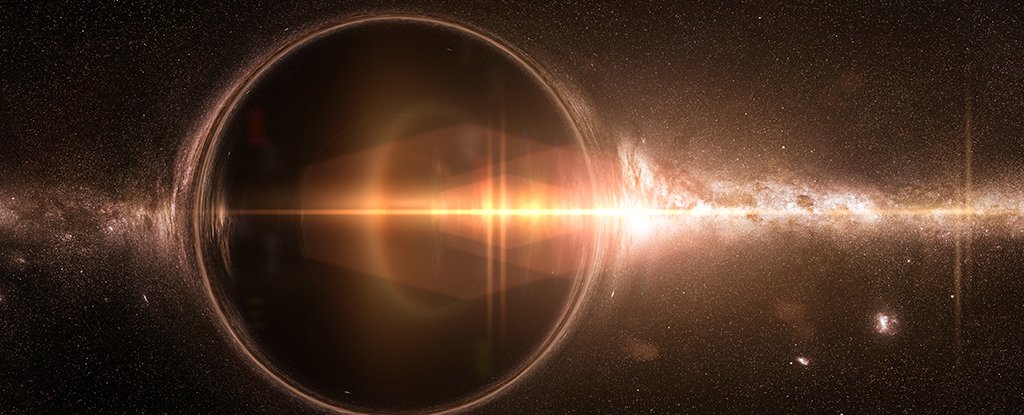In the initial days of space research, it was believed that black holes were space objects into which things could enter, but never leave. However, this all changed in 1974, when Stephen Hawking proposed a groundbreaking theory regarding a special kind of radiation, which later became known as Hawking radiation. Stephen Hawking was an English theoretical physicist and cosmologist who is most famously known for his theoretical prediction of Hawking Radiation. That being said, what exactly is Hawking radiation?
To understand this phenomenon, it’s imperative to have a basic understanding of black holes. When a massive star dies, it leaves a small but dense remnant core in its wake. If the mass of the core is more than roughly 3 times the mass of the sun, the force of gravity overwhelms all other forces and a black hole is formed. A black hole is not just an empty space; in fact, it’s a great deal of space packed into a very small area. Think of a star that is 10 times more massive than ours being squeezed into a sphere with a diameter equal to the size of New York City.
A result is a celestial object whose gravitational field is so strong that nothing, not even light—can escape it. This is how black holes earned their name because they’re pitch black! We have a separate video dedicated to black holes, which you can check out by clicking the link on the top right corner or visiting the link in this video’s description. In the early days of scientific research concerning black holes, astronomers had a very basic understanding of black holes. It was believed that black holes radiate no energy of any kind.
However, this all changed in the year 1974, when a young English physicist named Stephen Hawking came up with a theory proposing that black holes were not really black; in fact, he claimed that they could emit radiation! His theory stated that the mass of a black hole could become energy, which could then be radiated away. He formulated this theory by combining insights from quantum mechanics—the science of how the very smallest particles of the universe work—and Einstein’s general theory of relativity, which deals with how gravity works at astronomically large scales.
Not surprisingly, Hawking’s theory was not initially well-received in scientific circles. Even so, it gradually gained acceptance and popularity and became known as a groundbreaking discovery in the field of black holes. The radiation emitted by black holes was therefore named Hawking radiation, in honor of the physicist who predicted its existence. According to the principles of quantum mechanics, for every particle throughout the universe, there exists an antiparticle. These particles always exist in pairs, and continually pop in and out of existence everywhere in the universe.
Typically, these particles don’t last long, because as soon as a particle and its antiparticle pop into existence, they annihilate each other and cease to exist almost immediately after their creation. That being said, things become a bit different at the boundary of a black hole’s event horizon, the point beyond which nothing can escape its gravity. If a virtual particle pair blip into existence very close to the event horizon of a black hole, one of the particles could fall Into the black hole while the other escapes.
The one that falls into the black hole effectively has negative energy, which is, in layman’s terms, akin to subtracting energy from the black hole or taking mass away from the black hole. Another particle of the pair that escapes the black hole has positive energy and is referred to as Hawking radiation. Due to the presence of Hawking radiation, a black hole continues to lose mass and continues shrinking until the point where it loses all its mass and evaporates. It is not clearly established what an evaporating black would actually look like.
The Hawking radiation itself would contain highly energetic particles, antiparticles, and gamma rays. Such radiation is invisible to the naked eye, so an evaporating black hole might not look like anything at all! It's also possible that Hawking radiation might power a hadronic fireball, which could degrade the radiation into gamma rays and particles of less extreme energy, which would make an evaporating black hole visible and quite spectacular! as it breathes its last and ceases to exist in our universe. No matter what, it's best not to go anywhere near an evaporating black hole, as it would be a source of lethal gamma rays and energetic particles, even if you couldn’t see anything!
An evaporating black hole would be detectable from Earth only when it evaporated within the solar system, or close to a star near us. This is a purely theoretical concept and quite a complicated one to prove mathematically, but Stephen Hawking succeeded in figuring it out and was the first person to do so. He was the first to set out a detailed theory of cosmology explained by merging quantum mechanics and the general theory of relativity. Scientists and cosmologists still don't completely understand how quantum mechanics explains gravity, but Hawking radiation continues to inspire research and provide clues into the nature of gravity and how it relates to other forces of nature.

